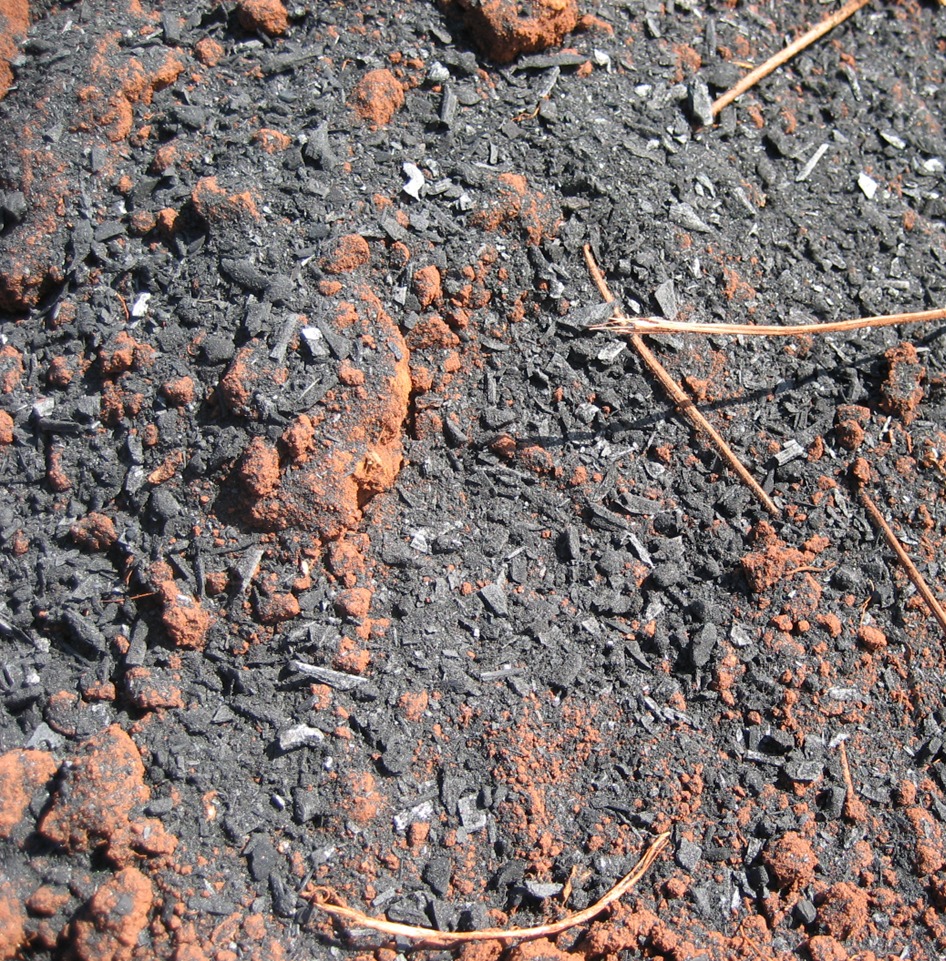Clean energy source biochar promotes plant growth and reduces severity of Fusarium wilt in tomato
Clean energy source biochar promotes plant growth and reduces severity of Fusarium wilt in tomato
A study held at Embrapa Environment with biochar – charcoal fines (material with a diameter of less than 9.5mm resulting from the production of charcoal) – showed that its use in the soil increases microbial biomass, promotes plant growth and reduces the severity of Fusarium wilt in tomatoes, in addition to mitigating climate change. It is a clean technology that contributes to the sustainability of agricultural production, and is in line with the United Nations Sustainable Development Goals (SDGs).
Embrapa Environment's researcher Cristiano Andrade states that the use of biochar is an alternative to mitigate anthropogenic greenhouse gas emissions, which include those from the agricultural sector, responsible for about 30% of national emissions. Its potential to mitigate emissions lies in sequestering carbon dioxide that plants exhale in the fields through photosynthesis during their development, and to its subsequent stabilization in coal when the biomass is pyrolyzed at high temperatures (usually between 350ºC and 750ºC), in the absence or low concentration of oxygen. Once the material is applied to the soil, it is very stable and will remain in the systems for centuries, promoting improvements related to soil fertility, physics and microbiology.
In Brazil, the world's largest producer of charcoal, charcoal fines are generated in large quantities due to their high fragmentation during their manufacturing, handling and transportation processes. Thus, charcoal production generates about 25% to 30% of fines and only 20% are reused in the pig iron industry.
Even though other kinds of biomass made from animal or plant sources can also be used to produce biochar, the fact that charcoal fines are already available is an advantage, since their value for the steel sector is relatively low and there is possibility of direct application onto the soil or use in the composition of organomineral fertilizers.
According to Lucas Silva, author of the study and a scholarship holder at Embrapa Environment, the severity of Fusarium wilt and microbial activities in the soil were inversely proportional to the concentrations of biochar incorporated into the soil. As concentrations were increased, not only root and shoot fresh and dry mass grew, but so did stem diameter. In addition, there was an effect in reducing the germination of Fusarium microconidia.
“The reduction in the severity of tomato Fusarium wilt with increasing concentrations of biochar into the soil can be explained by the induction of systemic resistance. In the scientific literature, there are reports that the addition of biochar induces resistance against gray mold and powdery mildew in both pepper and tomato plants,” Silva states.
According to the Embrapa Environment researcher Wagner Bettiol, plants can actively recruit beneficial microorganisms in their rhizospheres to fight the attack of plant pathogens. Fusarium wilt, caused by three races of Fusarium oxysporum f. sp. lycopersici, is one of the most economically important and widespread diseases of cultivated tomato and its diversity is observed in pathogenic strains.
The increase in microbial biomass carbon showed that microbial biomass increases in the soil near the biochar particles. Moreover, higher growth rates of microbial communities were observed in soil layers enriched with charcoal, which indicates that microorganisms are capable of using carbon fractions from biochar for their development.
The suppression of plant diseases caused by soilborne plant pathogens may be related to biochar's adsorptive capacity to reduce compounds (root exudates), which would otherwise facilitate pathogen detection and infection in the roots, since root exudates act as chemoattractants for a number of phytopathogens and stimulate spore germination.
“In greenhouse experiments, activated carbon adsorbs allelopathic compounds produced by plants. Therefore, it is reasonable to assume that the interferences of biochar incorporated into the soil occur between roots and soilborne plant pathogens,” Andrade states.
“Therefore, not only the abundance but also the growth behavior of roots may change in response to the presence of biochar. With positive impacts on soil fertility and physical and biological attributes, roots can have better development and vigor, contributing to the achievement of competitive yields. Our focus in future research is to evaluate a possible synergism between biocontrol agents and biochar that has been incorporated into soil,” Andrade says.
Cristina Tordin (MTb 28.499/SP)
Embrapa Environment
Press inquiries
meio-ambiente.imprensa@embrapa.br
Phone number: +55 19 3311 2608
Translation: Mariana Medeiros (13044/DF)
Superintendency of Communications
Further information on the topic
Citizen Attention Service (SAC)
www.embrapa.br/contact-us/sac/

